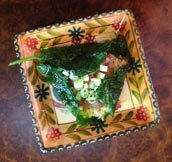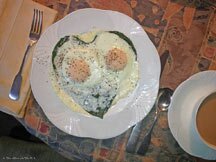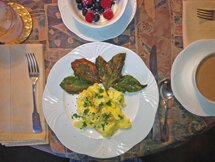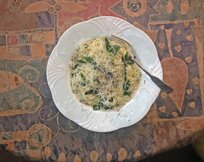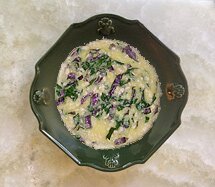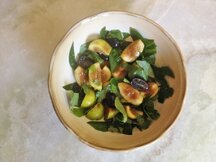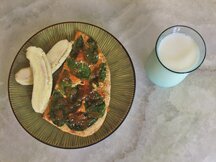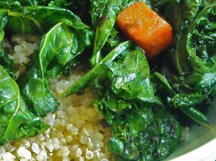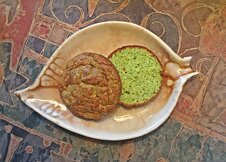
• TO PERFECT ISLAND HOME PAGE •
COMMUNITY EDIBLES GARDENS
Pine Avenue, Anna Maria Island & Main Street, Lakewood Ranch
Sponsor a garden at your business
or have one of your own at home!
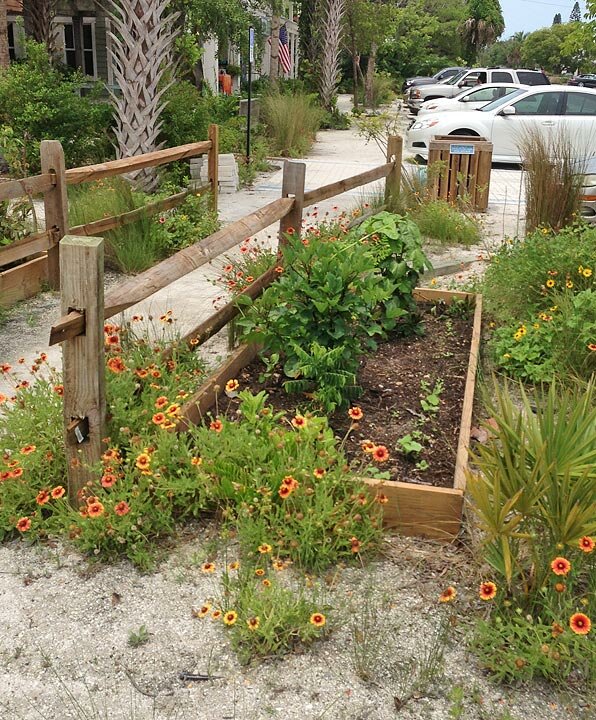
One of the first of the now 30 gardens at the time of its planting at the Pine Avenue Restoration project...

...augmented at the second planting by this fabulous lineup of 5 gardens sponsored by the merchants of the Historic Green Village, significantly boosting the street's moniker as the "Greenest Little Main Street in America."
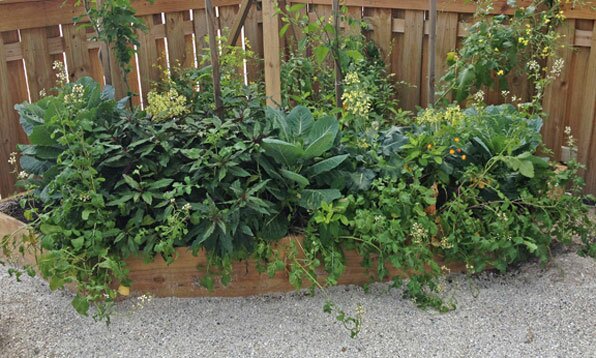
Now those gardens, just as we intended, have inspired personal gardens like this epitome of abundance at Tom and Missy Abrunzo's Anna Maria vacation home.
READ THE FULL STORY OF THE BIRTH OF THIS PROJECT IN THE
GENERAL PRESS RELEASE
WATCH THIS MOST INTERESTING PANEL DISCUSSION ON THE GARDENS
STUFFED PUMPKIN BLOSSOMS
FRAME : 4ft x 12ft frame of 2x12 Pressure treated Pine set 1-2" in the ground so nutrients won't leak out the sides
FILL : Each 4x12 frame with 4x4 corner braces needs from 42 to 44 cu. ft. of soil enhanced with 2 lbs. of chicken manure.
LAYERS:
• we cover the bottom with shade cloth or a thick layer of newsprint
• do not use glossy newspaper inserts as their inks are toxic
• we fill the bottom of the frame with 22 cu. ft. of top soil
• then we sprinkle 2 lbs. of pasteurized chicken manure over the bed
• on top we put 22 cu. ft. of special organic potting soil mix
• finally we dig in 1/2 to 1 lb. of worms ordered online
• after all seedlings mature you can mulch with oak leaves
• mulch is seldom needed though as the vegetables will cover the bed
• once a year we top off the bed with more potting soil mix as needed
• fertilizer has not been needed
• maintenance is minimal, primarily to replace seasonal vegetables
IRRIGATION: A Y splitter is attached to the nearest hose bib. The garden hose is attached to one branch of the Y and a battery operated irrigation controller is connected to the other one. From the controller, a 3/4 in. poly tubing line goes to the bed. 60 ft. of 1/4 in. vinyl tubing with emitters embedded every 6 in. is installed on top of the bed winding in equally spaced rows around the surface held in place with steel staples tie downs. A goof plug seals the end and a barbed connector at the head of the line is inserted into the 3/4in poly tube that comes from the controller on the hose bib.
The advantage of this cobbled together system is its independence of any landscape irrigation system the is likely to run only a few days each week or less. Irrigation of a vegetable bed through the low volume emitter tubes requires much longer an more frequent running times as well as the ability to vary the frequency and runtimes seasonally as new plants are added. If the irrigation is connected to an existing system, it should have its own independent valve and zone on the controller.
• SOILS AND AMENITIES:
The most important component of a raised bed garden is the soil that fills it.
In the beginning we composed our own fill in the style of the Permaculture's sheetmulch that layers all the essential ingredients of a perfect growing medium. However, the logistics and labor cost of assembling multiple beds in various locations around the community all at once when 8 or 9 beds were ordered proved to be overwhelming.
So we sought out a local source of a bona fide organic growing medium and found Dr. Ali Tahiri (aka Dr. Dirt) of in Sarasota who enabled us to replace the entire contents of our beds with his products that are available in 1 cu. ft. bags that facilitate our installations.
The doctor's prescription was for 22 cu.ft. of his topsoil on the bottom, 2 lbs of pasteurized chicken manure spread over the middle, and 22 cu.ft. of his "beyond organic" potting soil on top.
The results have so far been outstanding. Installation is much easier and the germination success of seeds sown in the potting soil mix is visibly greater.
So now, with two years experience and the kinks worked out, we are able to efficiently assemble an extraordinarily productive bed fully planted that is well worth the investment.
• A BED OF YOUR OWN:
If you would like us to build an Edibles Garden for you or want advice how to build your own, contact me:
Michael Miller or [email protected]
• ECHO'S HEAT TOLERANT VEGETABLES :
Ninety minutes down I-75 at Exit 143 (Bayshore Rd) in North Ft.Myers, there is a most fascinating place, the farm and retail nursery of ECHO, the Educational Concern for Hunger Organization. They grow a sizable variety of edibles that thrive in hot climates and send the seed to other organizations working in underdeveloped countries around the world, spreading sustainability to those who most need it.
Coincidentally, these plants are also an answer to the prayers of every Florida gardener who has long ago given up on growing vegetables here in the summer. And, as you can tell by the descriptions above, getting to know them is an exciting experience and addition to your life.
• ABOUT ECHO :
• Visit ECHO'S website at for complete information.
• Visit their Global Farm and take the wonderful 2 hour tour.
• Go early and buy before the tour ... the plants go fast after it.
• will help you select.




